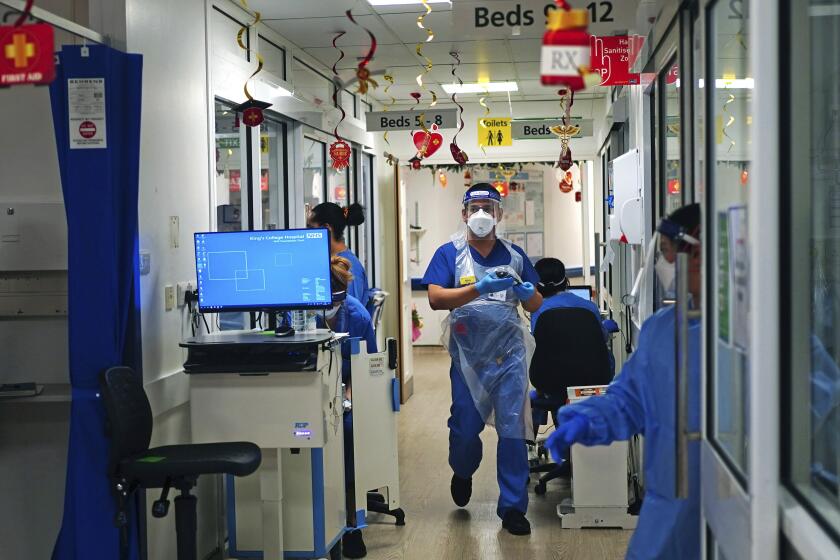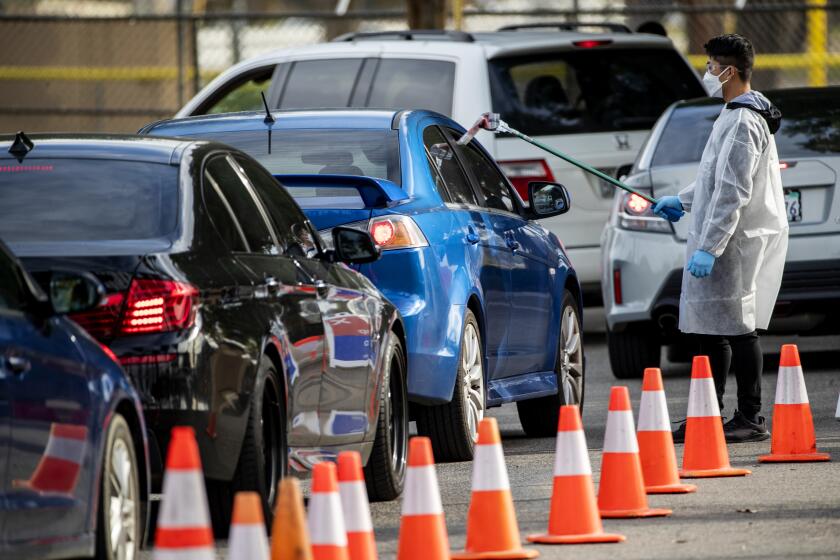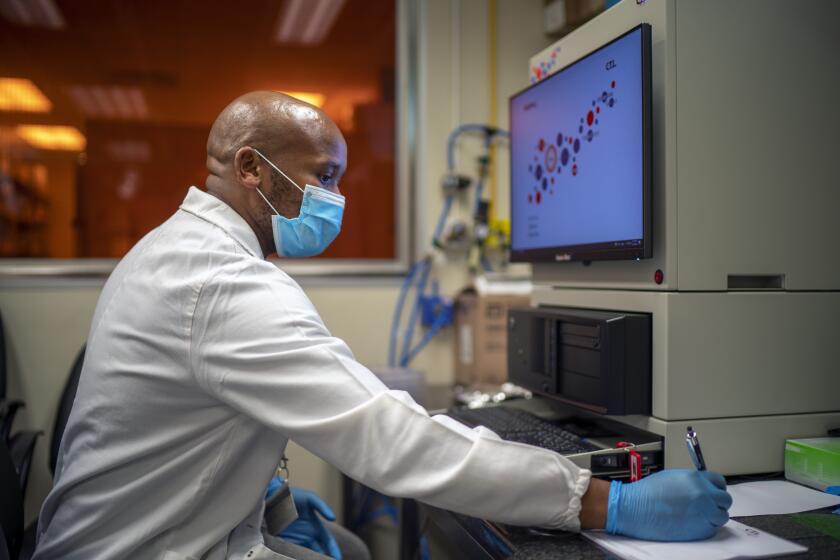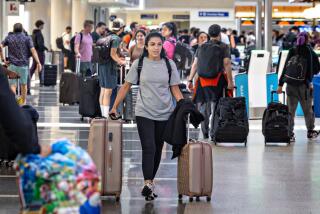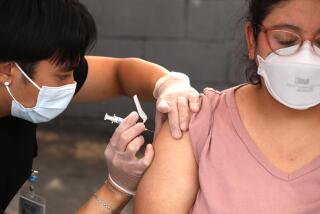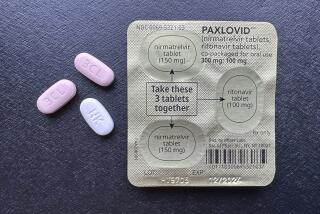CDC recommends shorter coronavirus isolation, quarantine for all
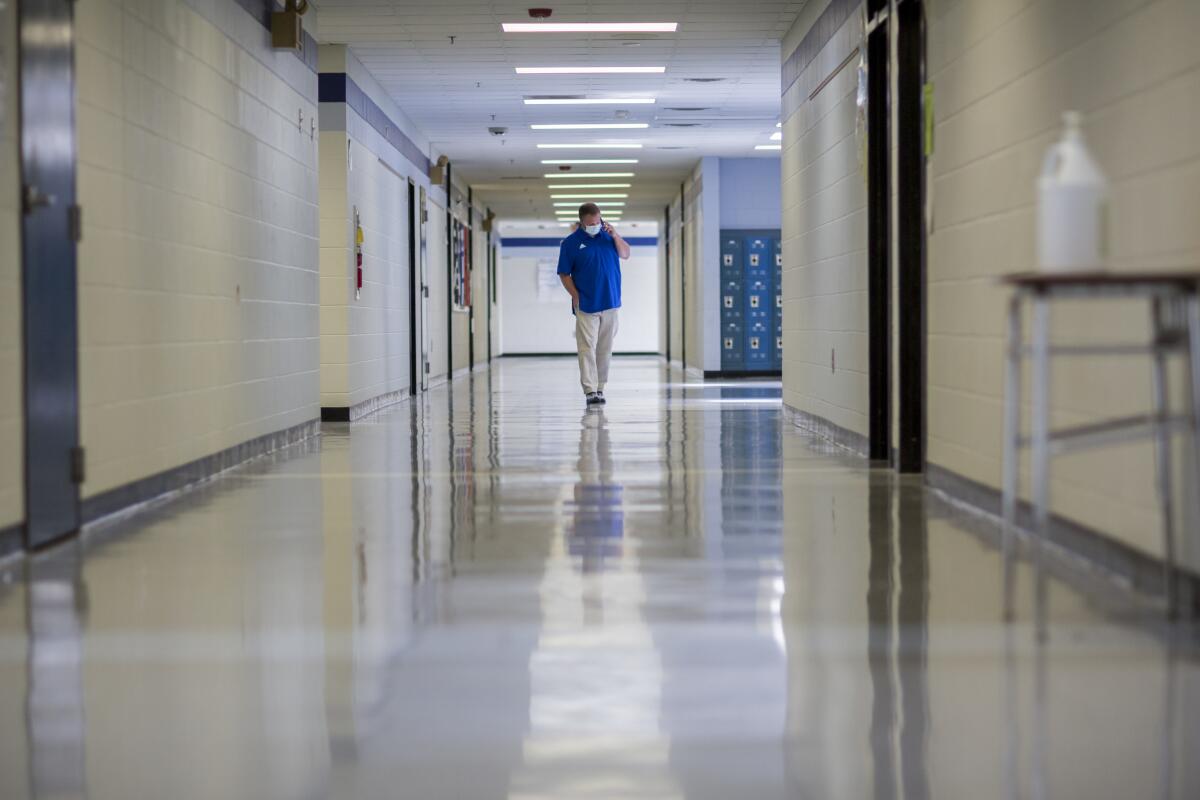
- Share via
NEW YORK — U.S. health officials on Monday cut isolation restrictions for Americans infected with the coronavirus from 10 to five days, and similarly shortened the time that close contacts of infected people need to quarantine.
The Centers for Disease Control and Prevention said the guidance is in keeping with growing evidence that people who catch the coronavirus are most infectious in the two days before and three days after symptoms, if any, develop.
The decision also was driven by a recent surge in coronavirus cases, propelled by the Omicron variant.
Early research suggests Omicron may cause milder illnesses than earlier versions of the coronavirus. But the sheer number of people becoming infected — and therefore the number having to isolate or quarantine — threatens to overwhelm hospitals and make it difficult for airlines and other businesses to stay open, experts say.
CDC Director Dr. Rochelle Walensky said the country is about to see a lot more Omicron cases.
“Not all of those cases are going to be severe. In fact, many are going to be asymptomatic,” she said Monday. “We want to make sure there is a mechanism by which we can safely continue to keep society functioning while following the science.”
Last week, the agency loosened rules that had called on healthcare workers to stay out of work for 10 days if they tested positive for a coronavirus infection. The new recommendations said workers could go back to work after seven days if they test negative and don’t have symptoms. The CDC also said isolation time could be cut to five days, or even fewer, if there are severe staffing shortages.
Here’s what scientists are watching for as they gauge what Omicron has in store for us this winter.
Now, the CDC is making the isolation and quarantine guidance for the general public even less stringent.
The guidance is not a mandate; it’s a recommendation to employers and state and local officials. Last week, New York state said it would expand on the CDC’s recommendations for healthcare workers to include employees who have other critical jobs that are facing a severe staffing shortage.
It’s possible other states will seek to shorten their isolation and quarantine policies, and CDC is trying to get out ahead of the shift.
“It would be helpful to have uniform CDC guidance” that others could draw from, rather than a mishmash of policies, Walensky said.
The CDC’s guidance on isolation and quarantine has seemed confusing to the public, and the new recommendations are “happening at a time when more people are testing positive for the first time and looking for guidance,” said Lindsay Wiley, a public health law expert at American University.
Early research points to mutations in the spike protein. But much remains unknown or unconfirmed.
Nevertheless, the guidance continues to be complex.
Isolation
The isolation rules apply to those who are infected with the coronavirus. They are the same for people who are unvaccinated, partly vaccinated, fully vaccinated or boosted.
They say:
• The clock starts the day you test positive.
• An infected person should go into isolation for five days, instead of the previously recommended 10.
• At the end of five days, if you have no symptoms, you can return to normal activities but must wear a mask everywhere — even at home around others — for at least five more days.
• If you still have symptoms after isolating for five days, stay home until you feel better and then start your five days of wearing a mask at all times.
Quarantine
The quarantine rules apply people who were in close contact with an infected person but not infected themselves. A close contact is someone who has been within six feet of an infected person for 15 minutes or more over a 24-hour period.
They say:
• The clock starts the day someone is alerted that they have been exposed to the coronavirus.
• Exposed people who are fully vaccinated and boosted can skip quarantine if they wear masks in all settings for at least 10 days.
• People who are fully vaccinated but not boosted are now treated the same as those who are partially vaccinated or unvaccinated. They should quarantine for five days and then can return to normal activities as long as they wear a mask in all settings for the next five days.
Five days
Suspending both isolation and quarantine after five days is not without risk.
A lot of people get tested when they first feel symptoms, but many Americans get tested for others reasons — for work, to participate in sports or to see whether it’s safe to visit family. A positive test result may not reveal exactly when a person was infected or give a clear picture of when they are most contagious, experts say.
Here are some of the questions researchers are still trying to answer about the latest version of the virus that causes COVID-19.
When people become infected, the risk of spread drops substantially after five days, but it does not disappear for everyone, said Dr. Aaron Glatt, a New York physician and a spokesman for the Infectious Diseases Society of America.
Under the new policy, there will still be a “small but significant number of people who are contagious,” he said.
That’s why wearing masks is a critical part of the CDC guidance, Walensky said.
